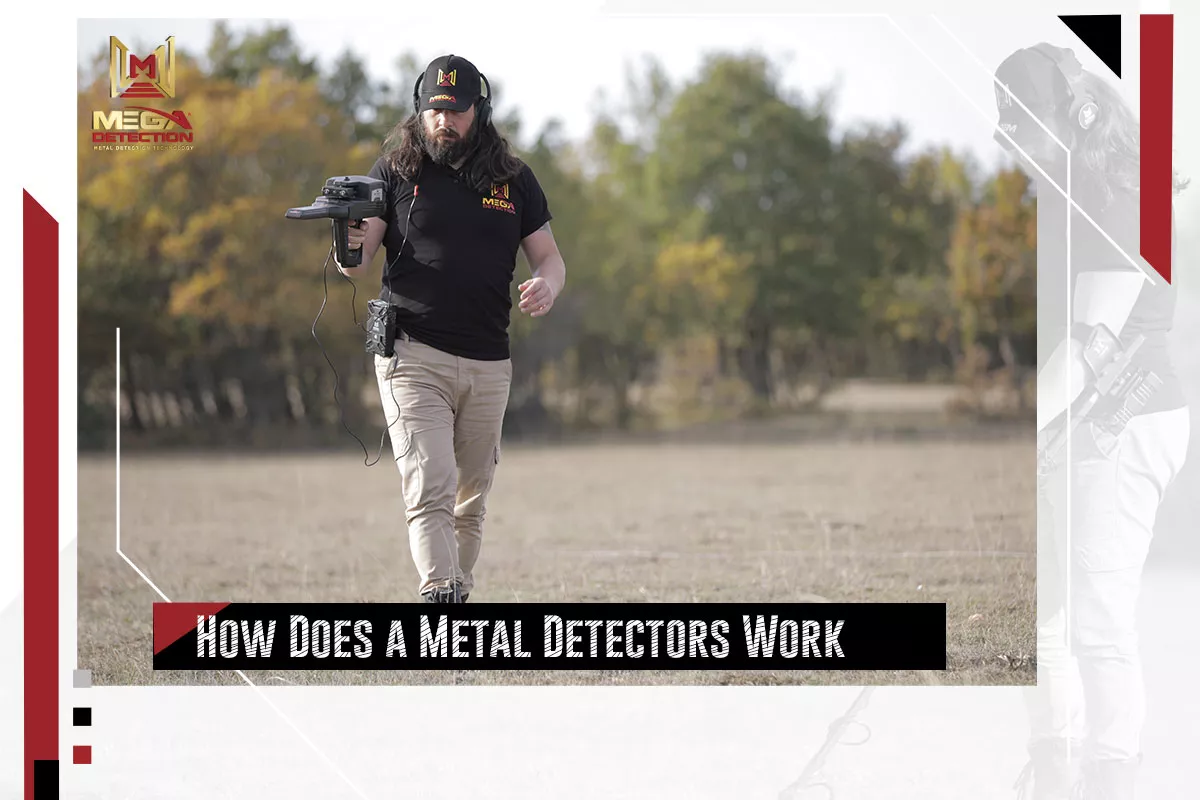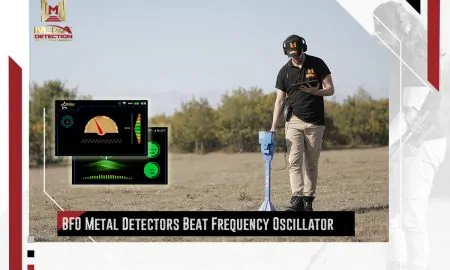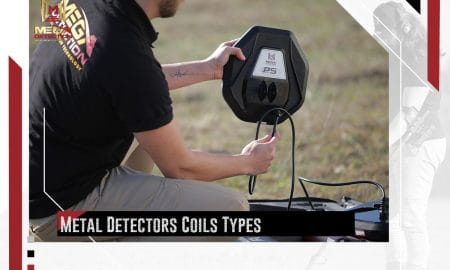How Does a Metal Detectors Work?
How Does a Metal Detectors Work?
Metal detectors operate by sending an electrical current through a coiled copper wire to generate a magnetic field (this coil is called the transmit or TX coil). When this magnetic field encounters metal it induces an equal opposing current which is sampled by the receive or RX coil.
What are the Different Types of Metal Detector Coils?
At a basic level every commercially sold metal detector either works through pulse induction or very low frequency technology.
Pulse induction detects metal through repeatedly allowing a high amperage electric current to pass through a low resistance coil for a very short period of time. This action creates a magnetic field to quickly be created and then quickly collapsed. When the magnetic field collapses it creates a voltage spike which is both high in intensity and opposite in polarity to the original pulse. The receive coil (which is often the same coil as the transmit coil in pulse induction coils) then measures the energy of the pulse at the point where it decays to zero.
When the magnetic field does encounter a target some of the energy of the field will be stored within the object. This will cause the reflected pulse to have less energy and in turn take longer to decay to zero. The reason why having less energy causes the pulse to take longer to decay to zero is that the energy is being transferred through electromagnetic waves. When energy is taken from the wavelength it becomes longer, or rather less frequent, and therefore slower.
Up to the point where the reflected pulse is measured, the signal being sampled, which is collected from the RX coil, contains only the signal from the TX coil which has been reduced in voltage by a resistor as to not overload it. When the reflected pulse is also present the signal being sent from the RX to the sampling circuit is changed. The signal which is sampled is then averaged to create a reference voltage which eventually becomes the voltage of the DC current powering the alert system. A higher voltage will result in a higher volume, or a higher pitch, or even a higher frequency of clicks.
Very Low Frequency detects metal by allowing a constant alternating electric current to pass through a coil to create an electromagnetic field. The polarity of that electric current is reversed thousands of times per second to create what is known as the transmit frequency. Any conductive object which encounters the magnetic field will be induced by the rapidly changing magnetic field to create something known as eddy currents. These eddy currents produce a magnetic field for the conductive object which has a polarity pointed opposite to the transmit field.
The Rx coil is arranged in a way, relative to the TX coil, that causes energy from the magnetic field of the TX coil to not affect the amount of net energy within the RX coil. This means that if a magnetic field was created by eddy currents within a conductive object then that would be the only force acting upon the RX coil. If any current is present then, in the RX coil, it will be sampled and converted to a DC current which powers an alert device. The greater the current in the RX coil the greater the current going to the alert device. This causes it to increase in volume, change pitch, or even increase in frequency of clicks (Much like a pulse inducing metal detector).
Discrimination between types of metal and determination of depth is possible with very low frequency coils. This is because each metal exhibits its own unique response to magnetic fields and have varying levels of conductivity. Additionally, because the time between induction and sampling will increase over distance. Ultimately, this data is all processed and then categorized by a mini-processor within the metal detector that has been programmed with a common constant value for these occurrences.












Leave a Reply